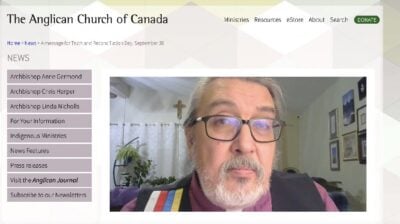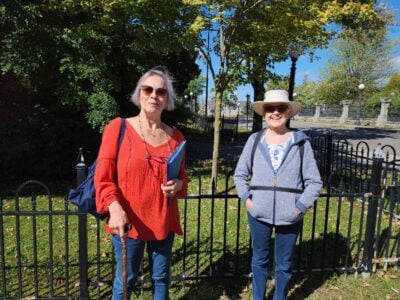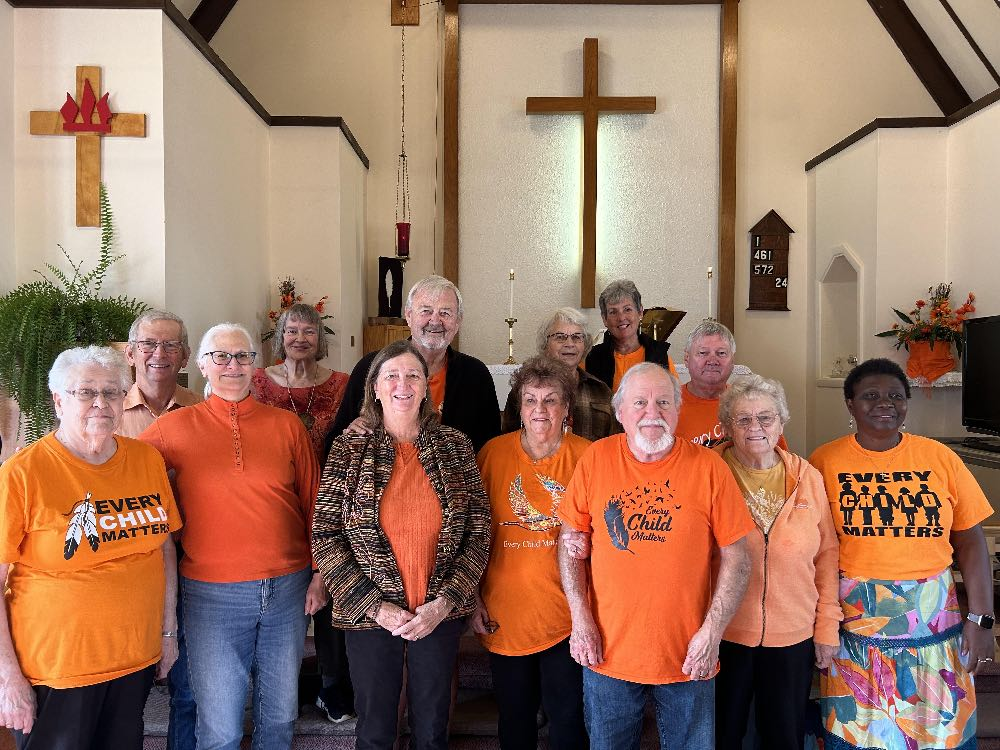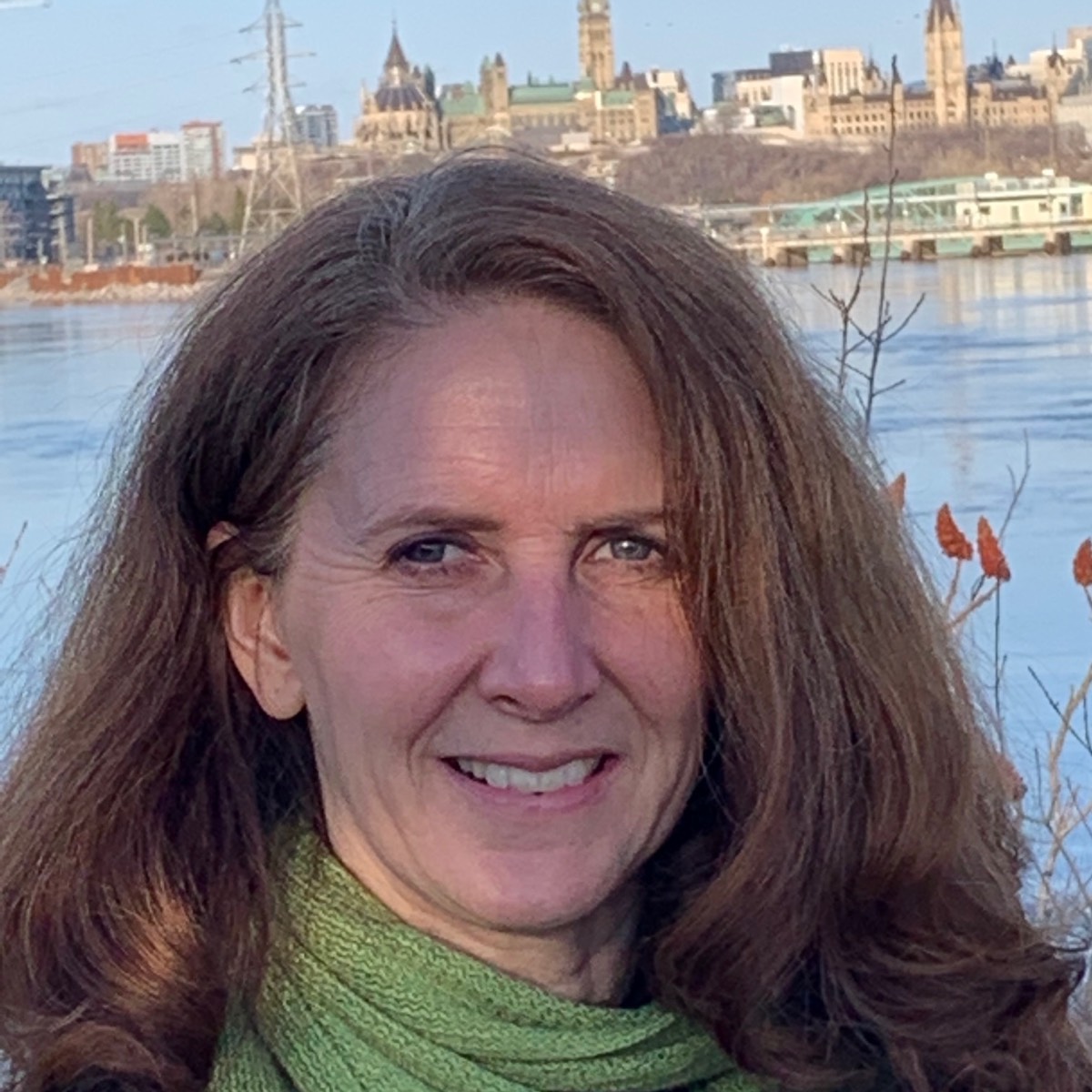Parishioners gathered at St. Margaret’s, Vanier in Ottawa on the morning of Sept. 30, for a prayer service to begin marking the fourth annual National Day for Truth and Reconciliation. They wore orange shirts, as many people across Canada did in symbolic solidarity with the experience of Phyllis Webstad from the Stswecem’c Xgat’tem First Nation in British Columbia. Six-year-old Phyllis wore a special orange shirt, a gift from her grandmother, on her first day of school, but it was taken from her, like so many aspects of Indigenous culture were stripped away from the 150,000 children who attended Indian Residential Schools across Canada.
Those who came to St. Margaret’s on this September 30 listened to and watched a recorded message from National Indigenous Archbishop Chris Harper to Anglicans across Canada as the homily.
“It is a day that many churches across this land will pause and have special services. It is a day when many [at]… municipal gatherings will reflect and tell stories and will share the history that all of us have inherited in the residential experience. But that experience is felt in different ways, especially for the Indigenous people — how many were traumatized…. And it is them that we also need to uphold in prayer and honor their stories….”
He said he likes the new variation of the word reconciliation that has emerged: reconciliaction. “It’s something that we do together.” … September 30th is a day “for all of us to first listen to the truth of the other and the Indigenous experience and what they live in every day. I ask that you listen with an open heart and a prayer that we together may seek reconciliation together. Check your hearts for the fences and the gates of defense that may hinder you from the shared journey of healing and hope.”
Individual Anglicans and parish groups honoured the day in various ways, including wearing orange and reflecting on the history of Indian Residential Schools and colonialism in Canada during worship services on Sunday, Sept. 29.
A group of parishioners from St. Bartholomew’s in Ottawa accompanied Incumbent the Rev. Canon Catherine Ascah on a reconciliation walking pilgrimage through Beechwood Cemetery, reflecting on the history of residential schools as they visited the graves of Nicholas Flood Davin, an architect of the residential school system, and Duncan Campbell Scott, the superintendent of the Department of Indian Affairs from 1913-1922. They also visited the grave of Dr. Peter Bryce, who was hired by the department to report on health conditions in the residential schools. His highly critical report called for major changes at the schools but was buried by the government at the time. He was forced to retire but later self-published his report. So many people leave messages of thanks at his grave that a mailbox has been placed there. They also paused at a plaque dedicated to Métis historian, journalist and author Olive Dickason, a key figure the study of Indigenous history in Canada. Other Anglicans took part in historical tours offered by Beechwood Cemetery and attended its screening of the film Spirit Bear: Echoes of the Past.
In Almonte, the Rev. Jonathan Kouri and parishioners from St. Paul’s attended and helped out as volunteers at a community event Reconciliation Through Art, which included an exhibit of works from Indigenous artists.
Kathryn Fournier, an Indigenous member of the diocesan All My Relations Circle (AMRC) led 15 people from her hiking group and AMRC co-chair Gwynneth Evans on a walk on the Chief Pinesi Portage Trail, which offers historical information about the Algonquin chief whose traditional hunting area surrounds the trail near the confluence of the Ottawa, Gatineau and Rideau rivers.

Fournier told Crosstalk the broad interest in September 30 is encouraging, but she thinks it is important for Canadians to know that residential schools were only one of the tools in the toolkit created to “eliminate the ‘Indian problem,’ which was seen as an impediment to the creation of Canada.” She mentioned The Indian Act as an example. “I hope that we use September 30, as well as June, Indigenous People’s History Month,… as times to better inform ourselves about the whole picture that goes way, way beyond residential schools.”
Related reading:
Holy Trinity reaches out with Quilts for Survivors









Listening for God’s voice in a time of change